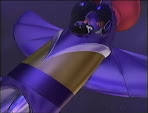Did you know there are cacti that live on bare rocks? It's true! The giant cardon cactus of Baja Mexico not only lives on rocks, but drills its roots into them for anchorage!

So how on earth does a plant accomplish this feat? The answer lies in a symbiotic relationship between the giant cardon cactus (Pachycereus pringlei) and an endophytic bacterium. The bacteria produce an acid that breaks the rock down into the minerals the the cactus needs. In return, the cactus allows the bacteria to live in its roots, suppling them with water, carbon and shelter. The acid that the bacteria make also allows the cactus's roots to bore into the rock by dissolving it. This process not only benefits the cacti and bacteria, but also breaks the rock down into soil at an accelerated rate so that other vegitation can grow there.
To continue the mutual symbiosis, P. pringlei "packages" the bacteria with it seeds. The seeds are then spread via bat or bird droppings which supply the young cardon cacti with nutrients until the bacteria can establish themselves.
Sources:
http://thenewcreationism.wordpress.com/2009/09/02/rock-dissolving-bacteria-in-desert-cacti/
http://news.bbc.co.uk/earth/hi/earth_news/newsid_8209000/8209687.stm
http://worldwidescience.org/
http://www.sciencedirect.com/science/journal/00988472
All images courtesy of BBC News






